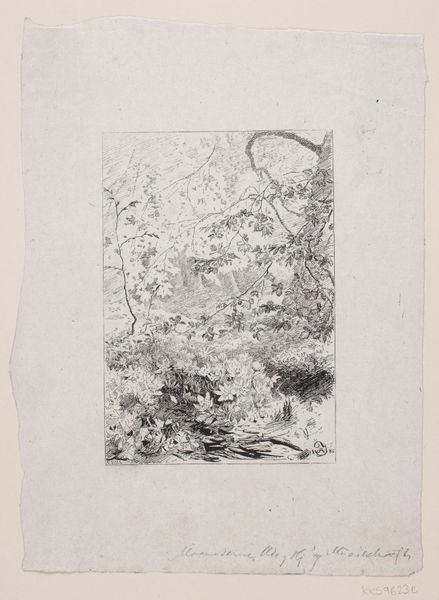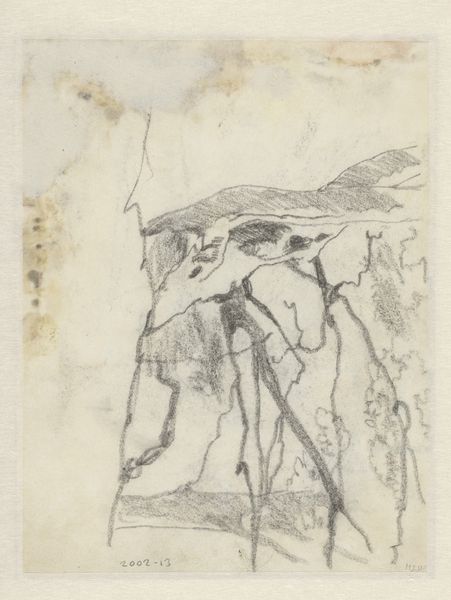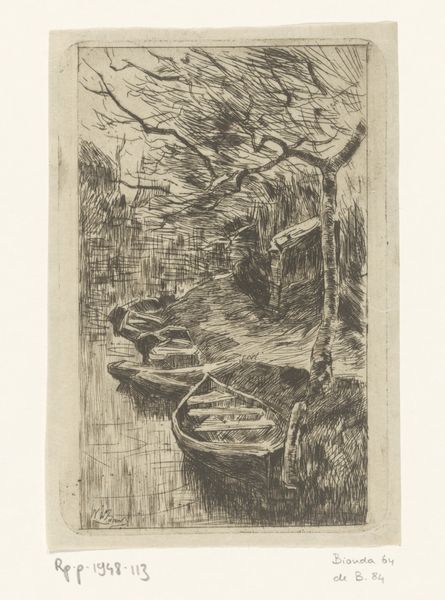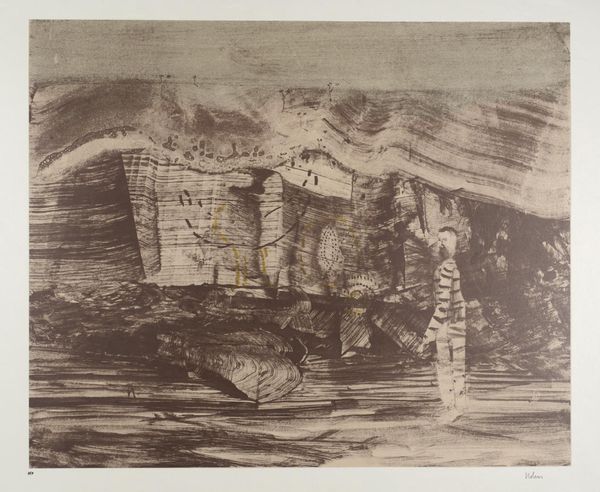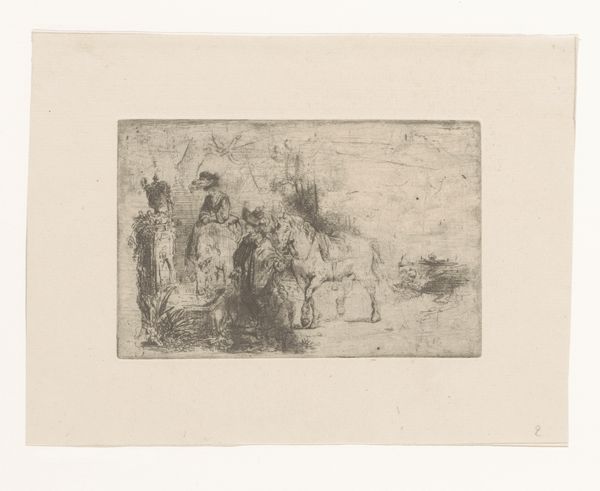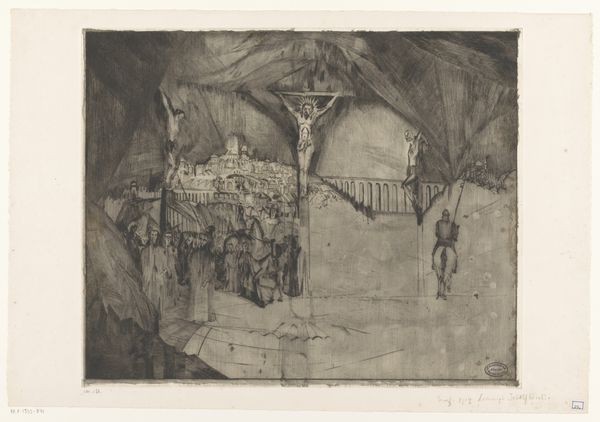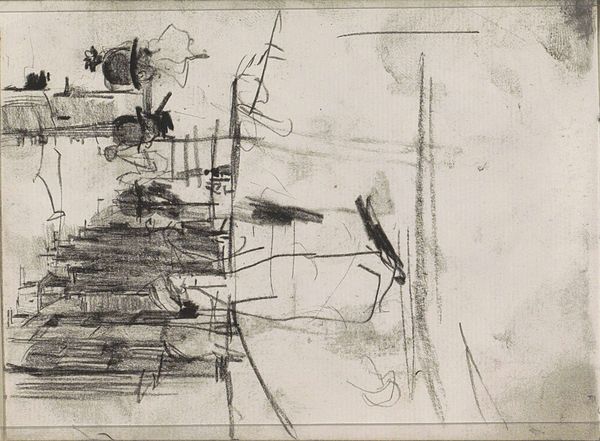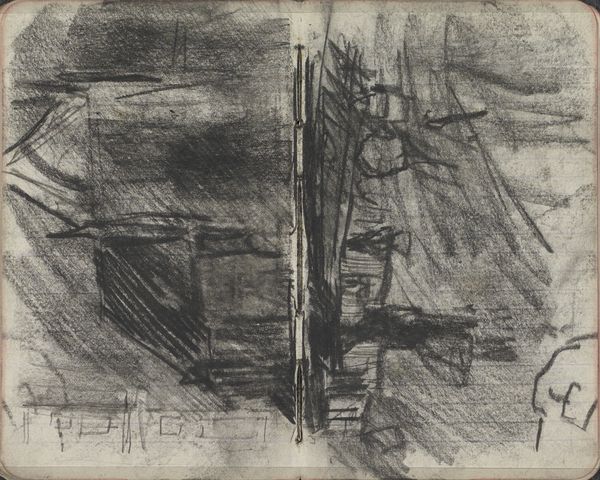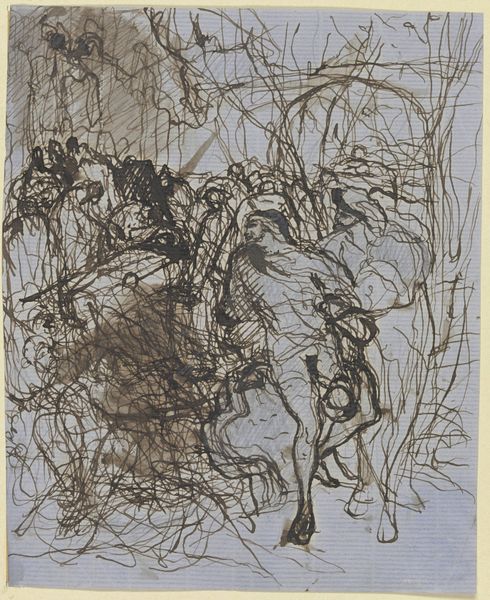
drawing, print, etching
#
drawing
# print
#
etching
#
landscape
#
etching
#
figuration
#
horse
#
men
Dimensions: plate: 3 1/4 x 2 15/16 in. (8.3 x 7.5 cm) sheet: 12 13/16 x 9 5/8 in. (32.5 x 24.5 cm)
Copyright: Public Domain
Editor: We're looking at Edgar Degas' "The Sportsman Mounting His Horse," an etching from 1856, currently residing at the Met. It’s small, almost like a postage stamp of frenzied lines depicting a horse and rider. I’m immediately drawn to the contrast between the dense foreground and the hazy background. What's your interpretation of this print? Curator: It's a glimpse into Degas' early fascination with horses, a theme that gallops through his entire oeuvre! For me, the seemingly chaotic lines aren't a flaw, but the point. Degas is capturing movement, the very act of mounting a horse, with an almost photographic immediacy – before photography had quite mastered the art of capturing such fleeting moments itself. Doesn't it feel a little like catching a secret, a private moment? Do you think the landscape plays a role in this? Editor: It does feel secretive. The landscape seems more of a backdrop than an equal partner in the scene. It's like the event is everything, the details incidental. It almost feels rushed. Curator: Exactly! Rushed, immediate, alive! Perhaps Degas wasn't aiming for pastoral perfection, but to immortalize a momentary action, and the nervous energy around it, and the very fact that he chose etching – with its capacity for line and shading—instead of a full rendering lends to that feeling, no? It feels less staged, more stolen. Like a forbidden look over someone's shoulder! Editor: It's interesting how focusing on the "stolen moment" changes everything. I came in seeing it as unfinished or simplistic, but I now view it as capturing pure energy and raw, natural movement! Curator: Ah, the magic of art! It whispers secrets, waiting for the right ears to listen!
Comments
No comments
Be the first to comment and join the conversation on the ultimate creative platform.
